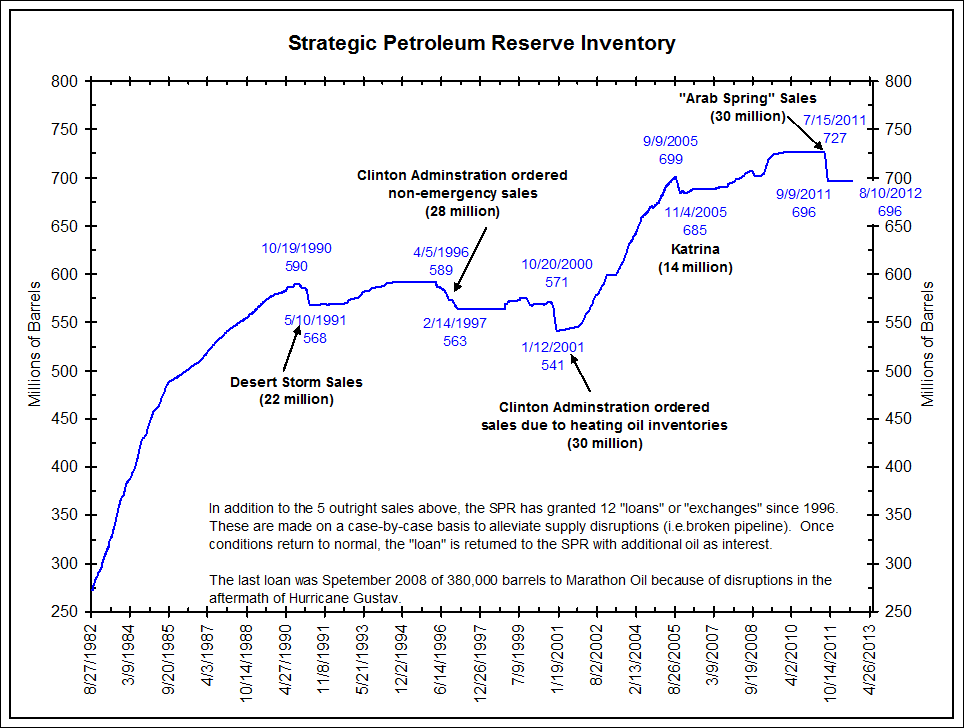- an emergency situation exists and there is a significant reduction in supply which is of significant scope and duration;
- a severe increase in the price of petroleum products has resulted from such emergency situation; and
- such price increase is likely to cause a major adverse impact on the national economy.
The biggest reason for this release of the SPR is obviously the turmoil in the Middle-East of which I talked about here. Other reasons are said to be because of the presidential election. The question is, how long can this release of the SPR put a lid on rising oil prices?
The strategic petroleum reserves are currently standing at 695 million barrels, while the U.S. uses 20 million barrels a day according to the Department of Energy. This means that when all of the reserves were to be released, we will have 695/20 = 35 days of extra emergency supply. So basically, oil prices would only drop for a month and then quickly rise again afterwards. Moreover, the U.S. wouldn't release all of its SPR at once, but is likely to release a small part of it. The U.S. has only released its SPR a few times in history, the first time it released its SPR was on January 1991 and the last time was on 23 June 2011. All of these releases were on average in the amount of 30 million barrels. Which is about 1.5 days of supply, too few to have any significant long-term effect on the oil price.
 |
| Figure 1: Releases of SPR (Source: Bianco Research) |
 |
| Chart 1: Light Crude to Gold Ratio |
Conclusion:
I believe the recent 10% drop in oil prices is overdone and should be a buying opportunity for investors, especially in terms of gold (Chart 1). The reason behind this logic is found in the amount of supply of the SPR, which is only 35 days maximum and probably 1.5 days if we look at history. Additionally QE3 was announced a few weeks ago and it should be very beneficial to the price of oil going forward. Investors can bet on a rebound in the price of oil by buying iPath Crude Oil ETN (OIL) or United States Oil Fund (USO).
Geen opmerkingen:
Een reactie posten